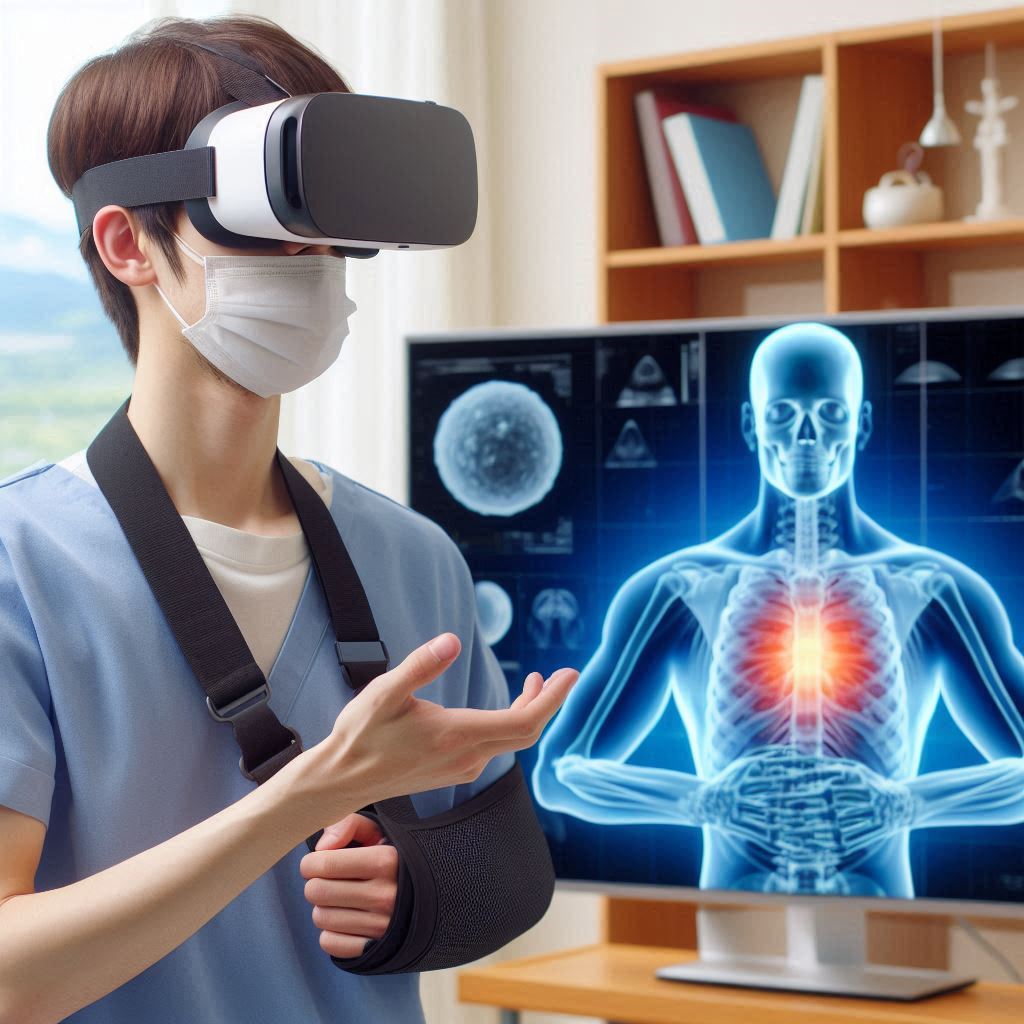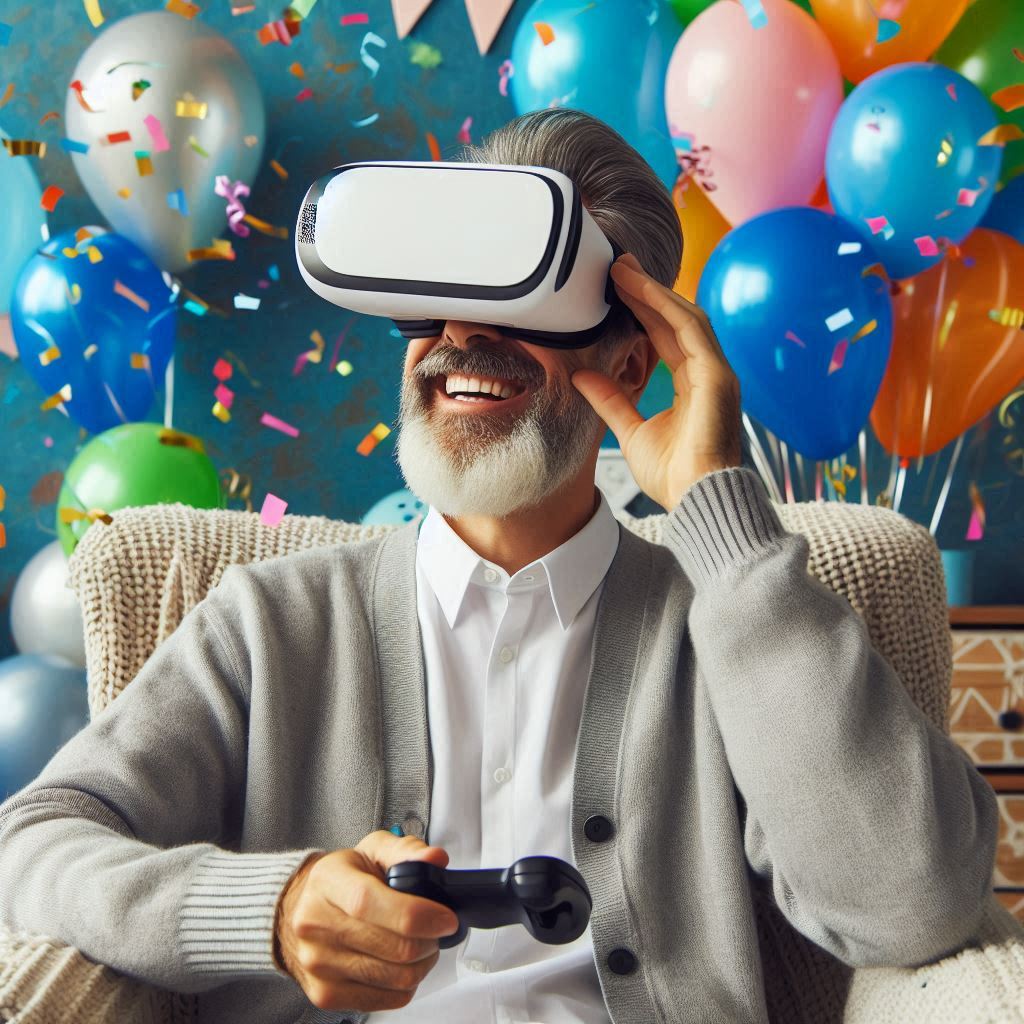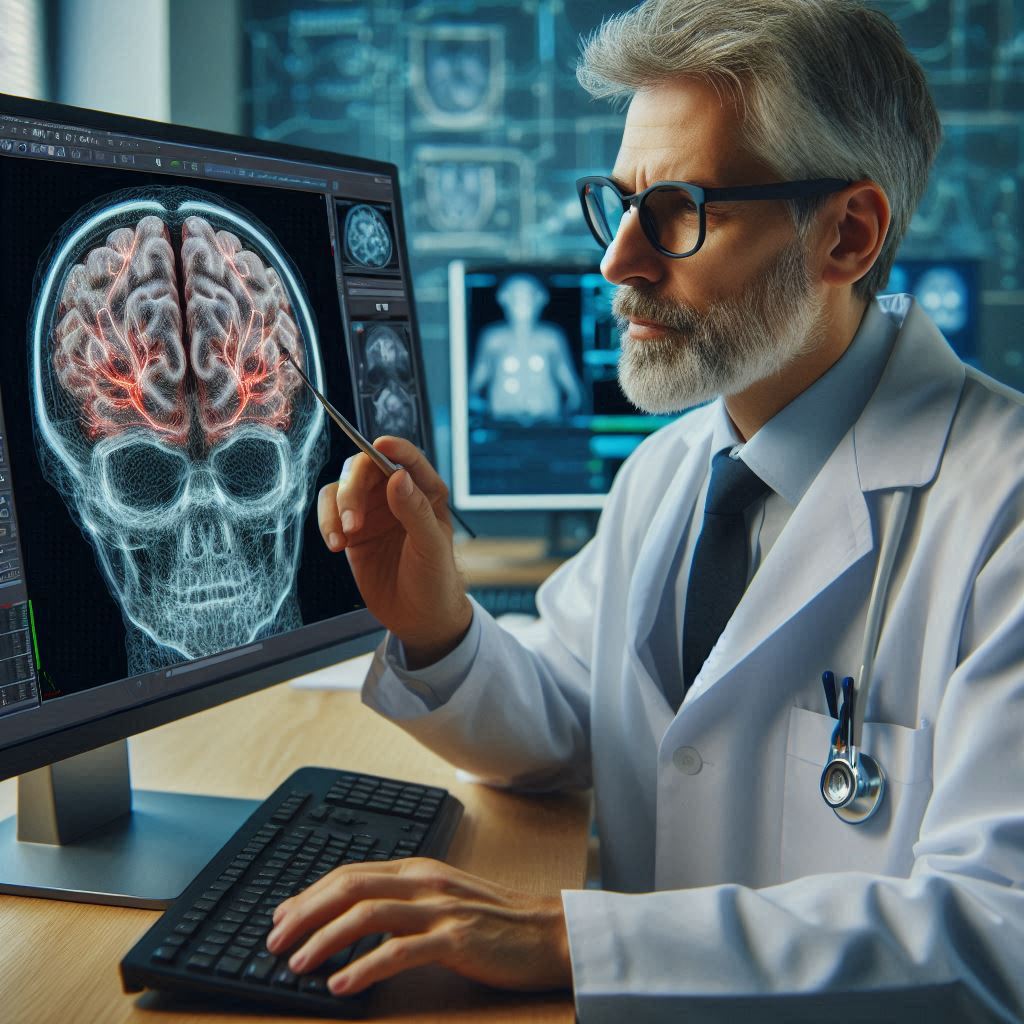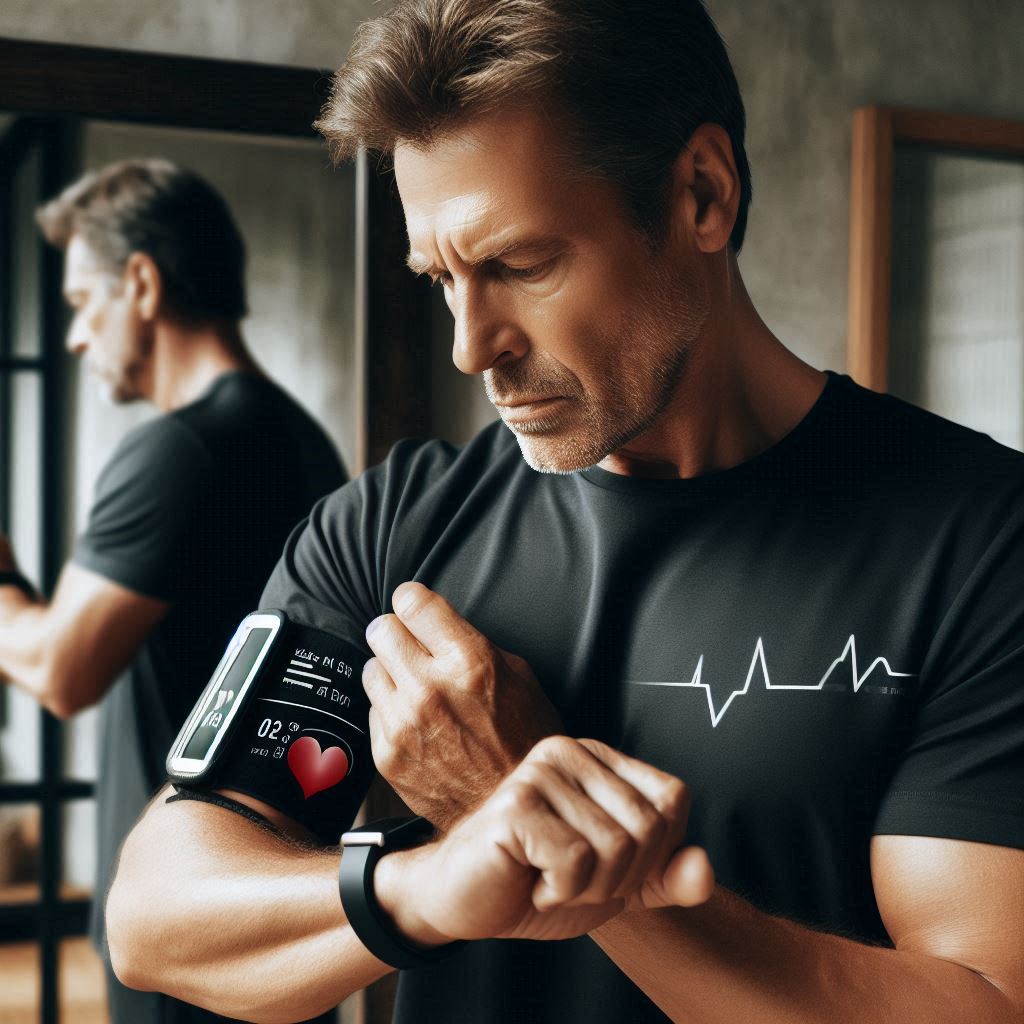Introduction
Overview of the importance of rehabilitation in recovery post-surgery
Rehabilitation plays a crucial role in recovery after surgery.
It aids in restoring functionality and promoting independence.
Patients often face physical and psychological challenges during their recovery
Effective rehabilitation programs can significantly enhance healing and improve outcomes.
Virtual Reality (VR) and its emerging role in various fields, particularly in healthcare
Virtual Reality (VR) refers to computer-generated simulations that immerse users in a virtual environment.
This technology creates interactive experiences that engage users on multiple sensory levels.
As VR technology advances, its applications have expanded into various fields, especially healthcare.
In recent years, VR has gained traction in rehabilitation therapies.
Purpose of the blog: To explore how VR is being used in post-surgery rehabilitation and its benefits
The purpose of this blog is to explore how VR enhances post-surgery rehabilitation.
We will discuss the innovative uses of VR and its significant benefits for patients.
By integrating VR into therapy programs, healthcare professionals can improve patient engagement and motivation during recovery.
Virtual Reality offers a unique and immersive experience for patients.
It allows them to participate in tailored rehabilitation programs.
These programs can simulate real-life scenarios without the risk of reinjury.
Patients often find VR exercises enjoyable, leading to increased adherence to their therapy schedules.
Moreover, VR can help reduce pain and anxiety during rehabilitation.
Studies show that immersive VR experiences distract patients from their discomfort.
As a result, they often report lower pain levels and enhanced emotional well-being.
This distraction aids in creating a more positive rehabilitation environment.
Additionally, VR allows for real-time monitoring of patient progress.
Therapists can track performance metrics and adjust therapy plans accordingly.
This adaptability ensures that rehabilitation remains effective and personalized.
As we delve deeper into this topic, we will uncover specific VR applications in rehabilitation.
We will highlight success stories and explore evidence-based outcomes.
Ultimately, the integration of VR in post-surgery rehabilitation represents a groundbreaking approach to healing and recovery.
Understanding Post-Surgery Rehabilitation
Post-surgery rehabilitation refers to the structured process individuals undergo after surgical procedures.
This process aids in regaining strength, mobility, and overall function.
It also plays a crucial role in facilitating healing and reducing the risk of complications.
What Post-Surgery Rehabilitation Entails
Post-surgery rehabilitation involves several key components:
- Assessment: Healthcare professionals evaluate the patient’s condition. This includes physical assessments and medical history reviews.
- Goal Setting: Patients and practitioners establish clear, achievable goals. Personalizing goals enhances motivation and ensures a focus on individual needs.
- Exercise Programs: Customized exercise regimens help improve strength and flexibility. These programs gradually increase in intensity as the patient progresses.
- Education: Patients receive information about their recovery process. Understanding what to expect empowers patients and encourages active participation.
- Pain Management: Effective pain control measures are essential. These prevent discomfort during rehabilitation and allow for more effective participation.
- Monitoring: Regular follow-up appointments assess progress. Practitioners adjust rehabilitation plans based on patient response and overall recovery.
The Significance of Rehabilitation in Enhancing Recovery
Post-surgery rehabilitation is vital for numerous reasons:
- Accelerated Recovery: Engaging in rehabilitation helps speed up the healing process. Patients often return to their pre-surgery activities sooner.
- Enhanced Mobility: Rehabilitation programs focus on restoring movement. This adjustment prevents stiffness and improves overall function.
- Strength Restoration: Strength training during rehab sessions is critical. It helps rebuild muscle mass lost during surgery and inactivity.
- Complication Prevention: A well-structured rehabilitation plan minimizes the risk of surgical complications. It addresses issues like blood clots or joint stiffness.
- Psychological Support: Rehabilitation provides mental health benefits. Patients often feel encouraged and supported throughout their recovery journey.
Overview of Traditional Rehabilitation Methods and Their Limitations
Traditional rehabilitation methods generally follow established protocols.
Despite their effectiveness, these methods have notable limitations:
- Cost: Traditional rehabilitation can be expensive, especially long-term. Many patients struggle with the financial burden.
- Accessibility: Not all patients have easy access to rehabilitation centers. Geographic limitations can hinder access to necessary resources.
- Motivation: Some patients face challenges in staying motivated. Traditional settings may not engage them effectively in their recovery.
- Time Commitment: Rehabilitation often requires significant time investment. This can be inconvenient for busy patients with work or family commitments.
- Limited Personalization: Traditional methods sometimes follow a “one-size-fits-all” approach. This can overlook individual patient needs and variations in recovery.
In fact, post-surgery rehabilitation is a multi-faceted process.
It includes assessment, goal-setting, exercise programs, education, pain management, and continual monitoring.
The significance of rehabilitation is clear: it facilitates accelerated recovery, enhances mobility, restores strength, prevents complications, and provides psychological support.
Put Your Tech Company on the Map!
Get featured on Nicholas Idoko’s Blog for just $50. Showcase your business, boost credibility, and reach a growing audience eager for tech solutions.
Publish NowHowever, traditional rehabilitation methods have limitations that can hinder patient recovery experiences.
Recognizing these challenges encourages the exploration of innovative solutions, such as virtual reality, for optimal post-surgery rehabilitation.
Read: Wearable Health Device Integrations with Custom Software Solutions
What is Virtual Reality?
Virtual Reality (VR) creates immersive, computer-generated environments.
These environments simulate real-world scenarios, enabling users to interact within them.
By wearing VR headsets, users experience multiple sensory stimuli that mimic reality.
This technology transports users from their current surroundings into alternate realms.
In rehabilitation, this capability helps enhance treatment outcomes significantly.
Definition of Virtual Reality Technology
VR technology encompasses hardware and software that generate simulations.
Users engage with these simulations through various devices, primarily headsets and controllers.
The essence of VR lies in developing a simulated experience that feels real.
This gives users a sense of presence within a virtual environment.
VR can replicate anything from everyday activities to complex scenarios.
How VR Works: Hardware and Software Components
VR systems consist of several essential components that function together.
Here are the primary elements:
- Headsets: These devices display 3D images and track head movements. Popular models include Oculus Rift, HTC Vive, and PlayStation VR.
- Controllers: Handheld devices let users interact with virtual worlds. They can track hand movements and actions.
- Computers or Consoles: These run VR software and generate the virtual environments. High-performance graphics and processing power are vital.
- Tracking Systems: Sensors that monitor user movements add realism. They allow users to explore the VR environment freely.
- Software: Various applications create diverse VR experiences. Some focus on games, while others support healthcare applications.
When users put on VR headsets, they see a 3D environment.
The software renders images based on user movements.
This combination of hardware and software creates a realistic experience that can effectively aid rehabilitation.
Different Types of VR Experiences Relevant to Rehabilitation
Virtual reality offers various experiences tailored for rehabilitation purposes.
Some of these include:
- Immersive VR: Engulf users entirely in a virtual world. They perceive the environment as real. Users can interact with objects and scenarios, fostering engagement.
- Augmented Reality: Overlays virtual objects onto the real world. This technique allows users to interact with both virtual and physical elements, enhancing therapy.
- Mixed Reality: Combines both AR and VR, merging the physical and digital worlds. It provides versatile treatment options for rehabilitation.
- Simulation Training: Allows users to train in a safe, virtual space. This method is particularly helpful for practicing skills post-surgery.
- Game-Based VR: Incorporates gamification into rehabilitation. This approach motivates users to engage and complete exercises while having fun.
The different types of VR experiences amplify engagement and motivation during rehabilitation.
This engagement can lead to improved recovery outcomes for patients.
In recent years, applications of VR in rehabilitation have flourished.
Healthcare professionals now integrate this technology into various treatment protocols.
Clinicians utilize VR to guide recovery processes, offering a unique blend of therapy and entertainment.
The Benefits of Using VR for Post-Surgery Rehabilitation
Incorporating VR into rehabilitation yields numerous benefits, including:
- Enhanced Engagement: VR captivates patients’ attention. Its interactive nature encourages patients to participate actively in their recovery.
- Improved Goals Setting: Therapists can create personalized goals within VR environments. This customization fosters better results in therapy.
- Reduced Pain Perception: Immersion in a virtual environment can distract patients from pain. This distraction reduces patients’ focus on discomfort during rehabilitation.
- Increased Learning Opportunities: VR offers safe spaces for practice. This allows patients to learn and relearn movements without the risk of injury.
- Faster Recovery Times: Engaged patients tend to recover faster. VR enhances physical rehabilitation by keeping patients motivated.
These benefits illustrate how VR revolutionizes post-surgery rehabilitation.
Patients achieve compelling results through tailored immersive experiences. VR emerges as a vital tool in modern therapeutic practices.
Challenges and Considerations for VR in Rehabilitation
While VR benefits rehabilitation, challenges still exist.
Healthcare providers must consider various factors before implementation:
- Cost: High-quality VR systems can be expensive. Not all healthcare facilities may afford to invest in such technology.
- Accessibility: Physical limitations and accessibility of VR systems must be considered. Not all patients can use VR headsets comfortably.
- Training: Healthcare providers need training to effectively implement VR technologies. They must understand how to integrate it into established treatment protocols.
- Potential Side Effects: Some individuals may experience VR-induced motion sickness. It’s essential to monitor patients for any adverse reactions.
By addressing these challenges, healthcare providers can effectively integrate VR into rehabilitation protocols.
This integration ensures patients reap maximum benefits while minimizing risks.
Despite these challenges, the future of VR in post-surgery rehabilitation appears promising.
As technology continues to evolve, so do the possibilities.
Research continues to back VR’s effectiveness across various domains.
Put Your Tech Company on the Map!
Get featured on Nicholas Idoko’s Blog for just $50. Showcase your business, boost credibility, and reach a growing audience eager for tech solutions.
Publish NowThis growing validation leads to increased adoption in clinical settings.
In essence, virtual reality stands as a transformative tool in post-surgery rehabilitation.
Its immersive experiences foster engagement, enhance recovery, and improve patient outcomes.
As more healthcare providers embrace this technology, patients can look forward to more effective rehabilitation experiences.
Through continued research and development, VR has the potential to redefine therapeutic practices.
Read: Blockchain-Based Health Records for Secure Data Management
Benefits of Using Virtual Reality in Rehabilitation
Virtual reality (VR) is transforming rehabilitation, especially for post-surgery patients.
Traditional rehabilitation often lacks engagement and can be monotonous.
However, VR provides an immersive experience that captivates patients.
This technology is paving the way for enhanced recovery and more effective therapy.
Engaging Patients: Increased Motivation and Participation
One of the most significant challenges in rehabilitation is maintaining patient motivation.
Traditional methods can feel repetitive and uninspiring.
In contrast, VR immerses patients in interactive environments.
This immersive experience captures their attention and encourages participation.
Research shows that patients using VR report higher satisfaction levels.
They feel more connected to their therapy, making it enjoyable rather than a chore.
VR allows patients to engage actively with their recovery process.
They can explore virtual worlds, solve problems, and complete tasks in a fun way.
Moreover, VR offers a novel approach to physical rehabilitation.
Patients are less likely to drop out of therapy when they find it enjoyable.
This increased engagement can lead to better adherence to rehabilitation programs.
- Patients experience a sense of accomplishment in virtual tasks.
- Progress tracking within the VR environment boosts motivation.
- Therapists can tailor experiences to suit individual preferences.
Tailored Experiences: Customizable Programs Based on Patient Needs
No two patients are alike, and each has unique needs.
VR technology excels in creating customizable rehabilitation programs.
Therapists can design experiences that address specific goals and preferences.
Patients recovering from surgery may face various physical challenges.
VR allows for adjustments in intensity and duration according to individual capabilities.
This customization enhances the rehabilitation experience.
Additionally, VR can simulate various scenarios that patients might encounter in daily life.
For instance, patients recovering from knee surgery can practice walking on virtual surfaces.
This practice prepares them for the real world, enhancing their confidence.
- Customized VR experiences can include different environments.
- Patients can progress at their own pace without pressure.
- Therapists can easily modify difficulty levels as patients improve.
Pain Management: How VR Can Help Alleviate Pain During Physical Therapy
Pain often hinders progress in rehabilitation.
Traditional pain management techniques may not be sufficient for all patients.
VR offers a novel approach to managing pain effectively during therapy sessions.
Numerous studies indicate that VR can significantly reduce perceptions of pain.
Virtual environments distract patients from their discomfort.
Put Your Tech Company on the Map!
Get featured on Nicholas Idoko’s Blog for just $50. Showcase your business, boost credibility, and reach a growing audience eager for tech solutions.
Publish NowThese immersive experiences shift focus away from painful sensations, making therapy more tolerable.
Patients can engage in calming or enjoyable activities while undergoing physical therapy.
This distraction helps them manage pain without relying solely on medication.
Reducing medication reliance is crucial, as it lowers the risk of side effects and dependency.
- VR provides distraction by immersing patients in engaging content.
- The technology promotes relaxation, aiding pain relief.
- Many patients report a noticeable reduction in pain levels during sessions.
Improving Outcomes: Evidence from Studies Demonstrating Improved Recovery Rates
The ultimate goal of any rehabilitation program is improved patient outcomes.
Emerging studies reveal compelling evidence supporting the use of VR in rehabilitation.
Patients utilizing VR often experience enhanced recovery rates compared to traditional methods.
One study highlighted patients who participated in VR therapy.
They showed improved mobility and a faster return to daily activities.
This acceleration in recovery is promising for post-surgery patients.
Another significant study found that VR includes physical exercises.
Patients demonstrated greater strength and flexibility following VR sessions.
These improvements can lead to quicker and more effective rehabilitation outcomes.
- Patients achieve functional improvements more significantly with VR.
- Studies show reduced recovery time for various surgeries.
- Enhanced outcomes lead to improved patient satisfaction and quality of life.
Virtual reality emerges as a revolutionary tool in post-surgery rehabilitation.
Its ability to engage patients actively enhances motivation and participation.
Customizable programs cater to individual needs, ensuring a tailored approach to recovery.
Pain management during rehabilitation benefits significantly from VR technology.
Patients often experience reduced discomfort as they immerse themselves in virtual environments.
Furthermore, extensive research underscores VR’s effectiveness in improving rehabilitation outcomes.
As technology advances, the integration of VR into rehabilitation seems promising.
Healthcare providers are beginning to recognize its potential.
Patients are likely to see improved recovery experiences as a result.
VR technology stands at the forefront of a new era in rehabilitation.
The future of post-surgery rehabilitation looks brighter, thanks to virtual reality.
Increased engagement, tailored experiences, effective pain management, and improved outcomes set the stage for success.
Embracing this technology could enhance the recovery journey for countless patients.
Read: AI-Powered Nutrition Apps for Personalized Diet Plans

Case Studies in Virtual Reality for Rehabilitation
Overview of Notable Case Studies
Several case studies demonstrate the efficacy of Virtual Reality (VR) in post-surgery rehabilitation.
These studies span various surgeries and rehabilitation protocols.
They highlight how technology can revolutionize recovery processes.
Knee Surgery Rehabilitation
A study conducted at a prominent rehabilitation center focused on patients recovering from knee surgeries.
The researchers used VR to design specific rehabilitation exercises for these patients.
Participants engaged in immersive environments that replicated real-life scenarios.
One group used traditional therapy methods while another group utilized VR simulations.
This allowed for controlled comparisons.
Put Your Tech Company on the Map!
Get featured on Nicholas Idoko’s Blog for just $50. Showcase your business, boost credibility, and reach a growing audience eager for tech solutions.
Publish NowStroke Recovery
Another significant case study involved stroke survivors.
Researchers aimed to enhance motor skills recovery through VR interventions.
The VR activities targeted arm mobility and coordination.
Patients participated in virtual environments where they performed tasks like reaching for objects.
The control group engaged in standard physical therapy practices, providing vital comparison metrics.
Spinal Cord Injury Rehabilitation
A case study focused on patients with spinal cord injuries.
The study emphasized the importance of psychological motivation alongside physical rehabilitation.
VR provided an engaging platform for exercises.
Patients practiced movement in various virtual landscapes.
This approach increased motivation and made rehabilitation exercises enjoyable.
Success Stories
Patients have shared inspiring stories about their rehabilitation journeys.
Caring for patients’ needs during recovery is critical, and these narratives provide insights into VR’s effectiveness.
John: Recovering from Knee Surgery
John, a 30-year-old athlete, underwent knee surgery after a sports injury.
His rehabilitation team integrated VR into his journey, focusing on balancing exercises.
Through VR, John experienced dynamic environments that simulated football training.
He regained balance faster than patients who underwent traditional therapy.
Sarah: Stroke Survivor
Sarah, a 60-year-old woman, suffered a stroke that affected her right arm.
Traditional therapy showed limited progress in improving her mobility.
After six weeks of VR therapy, Sarah reported significant improvements.
VR games helped her practice reaching movements.
Engaging in these activities made rehabilitation seem less daunting.
Her enjoyment contributed to her substantial recovery in motor skills.
Michael: Overcoming Spinal Cord Injury
Michael, a 50-year-old man, experienced a traumatic injury to his spinal cord.
His rehabilitation involved intense physical therapy and VR sessions designed to boost his motivation.
Through VR, he interacted with various virtual landscapes.
This approach highlighted his progress and inspired him to persist even when challenges arose
Consequently, Michael showed remarkable resilience in his recovery.
Analysis of Results
Measuring the success of VR rehabilitation requires specific metrics.
These metrics help quantify outcomes effectively.
They also provide valuable insights into the therapy’s efficacy.
Range of Motion
One critical measure of success is assessing the range of motion.
Both passive and active range of motion tests provide valuable data.
Clinicians track improvements over time.
Pain Levels
Another essential metric involves monitoring pain levels.
Patients often report pain intensity on a scale, providing insight into their recovery.
Put Your Tech Company on the Map!
Get featured on Nicholas Idoko’s Blog for just $50. Showcase your business, boost credibility, and reach a growing audience eager for tech solutions.
Publish NowLower pain levels usually correlate with improved function.
Functional Independence
Assessing patients’ ability to perform daily tasks is crucial.
The Functional Independence Measure (FIM) allows professionals to evaluate improvements.
Higher scores typically indicate greater independence in performing daily activities.
Patient Satisfaction
Patient satisfaction surveys provide insight into the overall experience.
Patients who find VR engaging may report higher satisfaction scores.
This engagement can lead to consistent participation in rehabilitation activities.
Psychological Well-Being
Evaluating psychological improvements is essential.
Researchers often use standardized assessments to gauge anxiety, motivation, and mood.
Positive changes in these areas reflect the additional benefits of VR rehabilitation.
Virtual Reality has significantly impacted post-surgery rehabilitation, as evidenced by several case studies.
Successful patient recovery stories demonstrate VR’s potential. Both quantitative and qualitative metrics underscore its effectiveness.
As more healthcare institutions explore VR applications, patient outcomes can continue to improve.
By integrating technology into rehabilitation protocols, clinicians can provide innovative and effective care to patients.
Read: Teletherapy Software for Mental Health Professionals
Challenges and Limitations of Virtual Reality in Post-Surgery Rehabilitation
Implementing Virtual Reality (VR) in post-surgery rehabilitation presents several challenges.
These challenges can hinder its effectiveness and adoption in clinical settings.
Below are some notable hurdles healthcare providers face.
Technical Challenges
Access to VR technology and software is a primary concern in rehabilitation practices.
Not every medical facility possesses the necessary resources to invest in VR systems.
The following factors further complicate the situation:
- High Initial Costs: Purchasing VR systems requires significant financial investment.
- Ongoing Maintenance: Like any technology, VR systems need regular updates and maintenance.
- Software Compatibility: Many facilities struggle with integrating new VR software into existing systems.
- Internet Connectivity: VR experiences often depend on stable internet connections, which some facilities may lack.
Additionally, VR technology evolves rapidly.
Staying updated with the latest advancements can become overwhelming for healthcare professionals.
Patient-Specific Issues
Not all patients may adapt well to VR environments.
Individual differences greatly impact the effectiveness of VR rehabilitation.
Here are some specific considerations:
- Age Factors: Older adults may feel intimidated by new technology, affecting their willingness to engage.
- Physical Limitations: Some patients may have mobility issues that limit the effectiveness of certain VR exercises.
- Personal Comfort: VR can induce discomfort or motion sickness in some patients, making them hesitant to participate.
- Previous Experience: Patients familiar with gaming may adapt quickly, while novices may struggle.
Healthcare providers must understand these individual needs to ensure successful rehabilitation.
Tailoring VR experiences to patient capabilities is vital for optimal outcomes.
Cost and Resource Allocation
Financial considerations heavily influence the implementation of VR in rehabilitation.
Many medical facilities face budget constraints that limit their capacity to adopt innovative treatment methods.
The following points highlight critical financial issues:
- Initial Investments: The high cost of VR hardware and software can deter facilities from adoption.
- Training Costs: Staff must be adequately trained to use and manage VR systems, adding to expenses.
- Patient Accessibility: Patients with limited financial resources may find it hard to access VR-based rehabilitation.
- Reimbursement Issues: Many insurance companies have not fully recognized VR as a reimbursable treatment.
Addressing these financial challenges is crucial for healthcare providers.
They need to explore funding opportunities and justify investments in VR technology.
Despite its potential, VR faces notable challenges in post-surgery rehabilitation.
Addressing technical, patient-specific, and financial issues is vital.
Put Your Tech Company on the Map!
Get featured on Nicholas Idoko’s Blog for just $50. Showcase your business, boost credibility, and reach a growing audience eager for tech solutions.
Publish NowBy overcoming these hurdles, healthcare providers can enhance patient care and improve rehabilitation outcomes.
Future Trends in Virtual Reality Rehabilitation
The landscape of virtual reality (VR) in rehabilitation is constantly evolving.
As technology advances, numerous innovations emerge on the horizon.
These innovations promise to enhance the effectiveness of post-surgery rehabilitation significantly.
The integration of VR with other therapeutic techniques also shows potential for improving overall patient outcomes.
Let’s explore these elements in detail.
Innovations on the Horizon: Upcoming Technologies and Advancements in VR
Several exciting innovations are drawing attention in the field of virtual reality rehabilitation.
These advancements can enhance user experience and therapeutic effectiveness.
- Enhanced Realism: Future VR systems will incorporate cutting-edge graphics and haptic feedback. This will create a more immersive experience for patients.
- Artificial Intelligence: AI will play a crucial role in personalizing VR rehabilitation programs. It can analyze patient data to tailor exercises based on individual recovery needs.
- Wearable Technology: Wearables integrated with VR will monitor patient progress in real-time. This data can help therapists adjust programs dynamically.
- Multisensory Experiences: Future VR systems may include olfactory and tactile stimuli. This can create a more comprehensive rehabilitation environment.
- Cloud-Based Platforms: These platforms will enable remote access to rehabilitation programs. Patients can engage in therapy from home while still being monitored by professionals.
These innovations aim to make virtual reality rehabilitation more effective and user-friendly, thus improving patient outcomes.
Integration with Other Therapies: How VR Might Complement Traditional Rehabilitation Tools
The integration of virtual reality with traditional rehabilitation techniques offers a promising avenue for enhancing patient recovery.
Here are several ways in which VR can complement existing therapies:
- Motivation and Engagement: VR can increase patient motivation through gamified elements. Engaging in interactive environments makes therapy more enjoyable.
- Real-Time Feedback: VR provides immediate feedback. Patients can see their progress and areas needing improvement during their rehabilitation.
- Reinforcement of Physical Therapy Exercises: VR can help reinforce physical therapy work. It provides an engaging platform to perform prescribed movements and exercises.
- Exposure Therapy: For patients with anxiety or phobias related to their surgery, VR can simulate environments. It allows patients to safely confront fears in a controlled setting.
- Social Interaction: VR facilitates social interaction among patients during rehabilitation. Connecting with others can reduce feelings of isolation and promote emotional well-being.
Through these integrations, patients can experience a more rounded and supportive approach to their rehabilitation process.
Potential for Widespread Adoption in Clinical Settings: Predictions and Expert Opinions
Experts predict a bright future for the widespread adoption of VR in clinical rehabilitation settings.
Several factors contribute to this optimistic outlook:
- Increased Acceptance: As evidence of effectiveness grows, both patients and healthcare providers are increasingly accepting VR. Positive clinical outcomes drive the demand for virtual resources.
- Cost-Effective Solutions: Integrating VR can lower healthcare costs in the long run. Patients can achieve better recovery outcomes in shorter timeframes, reducing overall expenses.
- Versatility Across Disciplines: VR can be used across various rehabilitation disciplines. It can adapt to physical, occupational, and cognitive therapy, creating broad applicability.
- Improvement in Outcomes: Studies consistently show that VR can improve patient adherence to rehabilitation programs. When patients are engaged, they recover more effectively.
- Technological Advancements: With ongoing developments in technology, the usability of VR tools is also improving. Accessibility will increase as systems become more user-friendly.
This increase in acceptance and usability suggests that healthcare systems worldwide will integrate VR into their rehabilitation protocols.
The future of virtual reality rehabilitation is indeed bright.
As we look to the future, innovations in technology stand poised to revolutionize virtual reality rehabilitation.
Enhanced realism, AI integration, and wearable technology will create a richer patient experience.
The evolution of VR as a complementary tool to traditional therapies indicates its potential as a vital component of comprehensive rehabilitation strategies.
Moreover, predictions for widespread clinical adoption speak to the growing recognition of VR’s benefits.
Both patients and healthcare providers will continue to embrace VR as valuable for improving recovery outcomes.
The potential that lies ahead suggests that virtual reality will become a standard element in rehabilitation practices.
This will ultimately enhance patient experiences and facilitate more effective recoveries.
Conclusion
Recap of the main points discussed regarding VR and post-surgery rehabilitation
In this discussion, we explored the transformative role of virtual reality (VR) in post-surgery rehabilitation.
VR technology offers innovative and engaging methods to enhance patient recovery.
By immersing patients in tailored virtual environments, they can experience interactive therapies that promote mobility and motivation.
We highlighted the way VR can significantly reduce perceived pain during rehabilitation exercises.
Patients often report feeling less discomfort when they engage in immersive VR experiences.
Furthermore, VR helps reduce anxiety and stress associated with post-surgery recovery.
This fosters a more positive rehabilitation atmosphere for patients.
Additionally, we discussed how VR allows for real-time progress tracking.
Medical professionals can monitor patient performance, enabling personalized adjustments in the rehabilitation plan.
This aspect ensures that each patient receives targeted care, promoting better outcomes.
The potential benefits of VR technology extend beyond physical recovery.
Enhanced engagement in rehabilitation increases adherence to therapy protocols.
Put Your Tech Company on the Map!
Get featured on Nicholas Idoko’s Blog for just $50. Showcase your business, boost credibility, and reach a growing audience eager for tech solutions.
Publish NowPatients who actively participate in their recovery tend to achieve faster and more effective outcomes.
Call to action: Encouraging further research and exploration into VR applications in healthcare
As we look ahead, it becomes essential to encourage further research into VR applications within healthcare.
Continued exploration will help uncover even more effective uses of VR in therapy and rehabilitation.
Collaboration between medical professionals and technology experts can drive this innovation.
In closing, the future impact of VR on patient recovery appears incredibly promising.
As technology advances, VR could become a standard tool in post-surgery rehabilitation programs.
This evolution has the potential to improve overall health outcomes, reshaping how patients interact with their recovery processes.
By embracing VR technology now, we can pave the way for a healthier, more engaged future in rehabilitation.
Before You Go…
Hey, thank you for reading this blog post to the end. I hope it was helpful. Let me tell you a little bit about Nicholas Idoko Technologies.
We help businesses and companies build an online presence by developing web, mobile, desktop, and blockchain applications.
We also help aspiring software developers and programmers learn the skills they need to have a successful career.
Take your first step to becoming a programming expert by joining our Learn To Code academy today!
Be sure to contact us if you need more information or have any questions! We are readily available.
[E-Books for Sale]
1,500 AI Applications for Next-Level Growth: Unleash the Potential for Wealth and Innovation
$5.38 • 1,500 AI Applications • 228 pages
Are you ready to tap into the power of Artificial Intelligence without the tech jargon and endless guesswork? This definitive e-book unlocks 1,500 real-world AI strategies that can help you.
See All 1,500 AI Applications of this E-Book
750 Lucrative Business Ideas: Your Ultimate Guide to Thriving in the U.S. Market
$49 • 750 Business Ideas • 109 pages
Unlock 750 profitable business ideas to transform your future. Discover the ultimate guide for aspiring entrepreneurs today!
See All 750 Business Ideas of this E-Book
500 Cutting-Edge Tech Startup Ideas for 2024 & 2025: Innovate, Create, Dominate
$19.99 • 500 Tech Startup Ideas • 62 pages
You will get inspired with 500 innovative tech startup ideas for 2024 and 2025, complete with concise descriptions to help you kickstart your entrepreneurial journey in AI, Blockchain, IoT, Fintech, and AR/VR.
We Design & Develop Websites, Android & iOS Apps
Looking to transform your digital presence? We specialize in creating stunning websites and powerful mobile apps for Android and iOS. Let us bring your vision to life with innovative, tailored solutions!
Get Started Today




